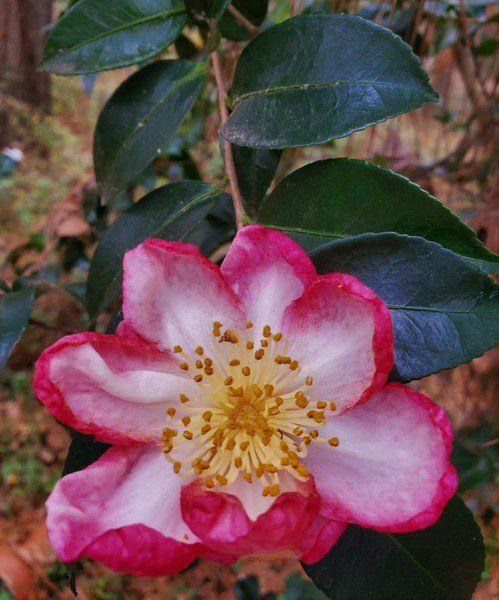Ce Cowart Schlicher | WCMG One of the prettiest sights during the holidays is when the Camellias bloom. Even if there is frost or a light snow on the ground, certain Camellias will bloom. These evergreen shrubs or small trees are not native to the U.S., but certain soils and rainfall amounts make them feel at home in East Texas. Camellia plants are happy with our acid soils. The more rich in humus, the better. Camellias do best where they get light shade or just morning sun. The light, filtered shade of our pines seems to be perfect. Most species do not grow well on chalky soil or other calcium-rich soils, so you won’t see many in Central Texas or the Hill Country. Most species of Camellias also require a large amount of water, either from natural rainfall or from irrigation, and they will not tolerate droughts. So supplemental watering and mulching is necessary when we have our dry spells. Besides the lovely blooms and a slight fragrance in the air, the reason I love Camellias is that they work well with the Southern Magnolia as an evergreen backdrop in the landscape. They have much smaller leaves, and different Camellias can vary in their shape. They are usually relatively slow growing, but are also very long lived. My Camellia started blooming at 3 years-old and is now nearly 19 years-old. It shows no signs of slowing down on the blooms, and I treat it very poorly. This means that I have never fertilized it since I planted it years ago. There are at least 100 species of Camellia, and it is argued that there may be up to 300. The two primary ones homeowners can find at nurseries are the Camellia japonica and Camellia sasanqua. These are the ornamental types, and there are numerous hybrids available as well. The type that tea comes from is C. sinesis, and isn’t typically found here. Most homeowners choose Camellias based on their flower color, which can range from white to pink, to some real reds! Only truly yellow flowers are found in […]






